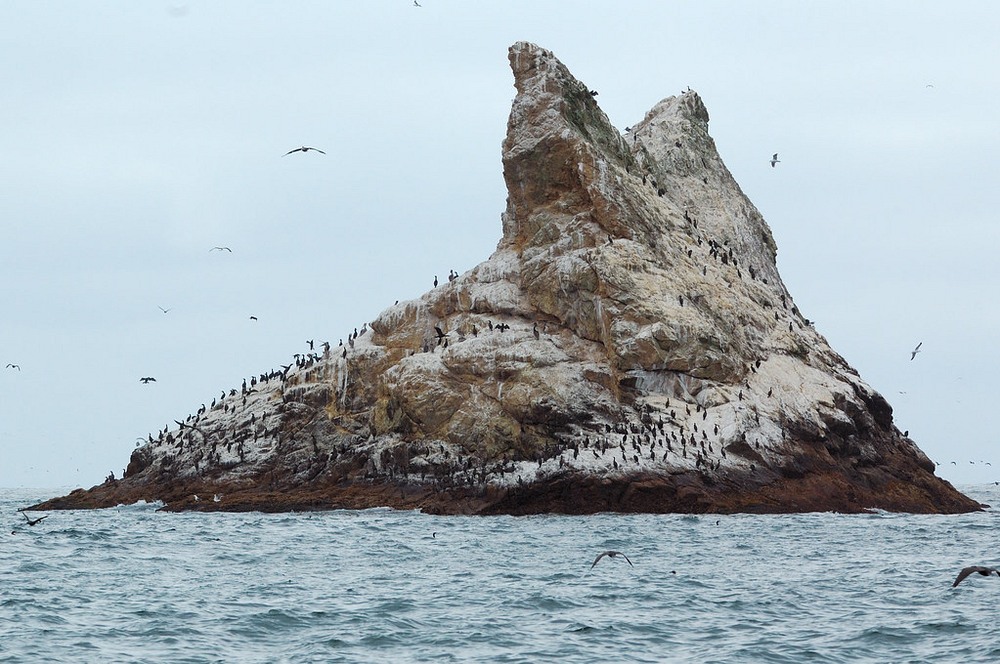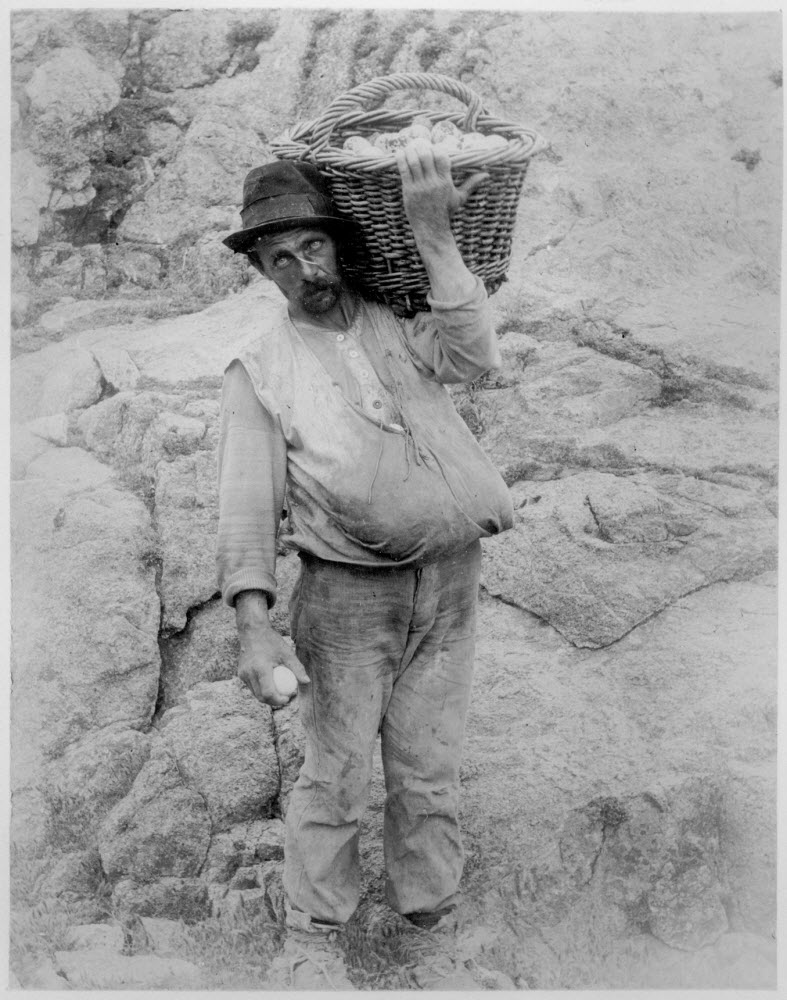The California Gold Rush of the 1850s induced another rush for a commodity, which, although not precious, became such rare and expensive that people literally killed each other for it. That commodity was eggs.
The rush for gold triggered one of the largest mass migration in American history that brought some 300,000 fortune-hunters from all over the world to the then thinly-populated ex-Mexican territory of California. Ships poured into San Francisco bay, and this small seaside settlement of about 200 residents mushroomed into a thriving town of 36,000.

One of the Farallon Islands with its many bird residents. Photo credit: Dave/Flickr
The rapid rise in population of San Francisco led to the shortage of food, and once all the chickens and eggs in the Bay area had been devoured, people started looking elsewhere for their daily protein fix.
Just 30 miles off the coast of San Francisco, are a group of islands called Farallon, that are home to the largest seabird colony in the United States outside of Alaska and Hawaii. The Russian traders were the first to exploit this natural resource. They harvested elephant seals for their blubber, and fur seals, California sea lions and Steller’s sea lions for their pelts. Then there were eggs, lots of them. The common murres—a seabird not much larger than a chicken—laid white elongated eggs with black spots that are much larger than chicken eggs and somewhat tough shelled that facilitated their easy exportation with minimal damage.

Eggs of the common murre bird. Photo credit: Frans Lanting/Mint Images/Alamy
The story goes that an enterprising doctor named Robinson and his brother-in-law got themselves a boat and sailed to the Farallons, where they loaded their vessels with murre eggs. Although they lost most of their haul in the rough sea, the doctor still managed to make a profit of $3000, selling the eggs at the going price of $1 a piece, or about $30 today—a ludicrously expensive rate.
Fried murre eggs had a very unappetizing look. The white of the murre egg stays clear and gelatinous, even when thoroughly fried, and the yolk is of fiery orange color. Worse still was the strong fishy aftertaste. But murre eggs were the only source of protein for the gold hunters, and they gobbled up whatever the inns and eateries were serving.
Almost immediately, the egg rush began, and the Farallon islands were crawling with egg seekers. Risking their lives, these intrepid men climbed over the sharp rocks, scaled sheer cliff faces and fended of aggressive seagulls to gather up eggs by the thousands. Eggs were laid between May and July. Shortly after, the egging season would begin. To make sure the eggs collected were fresh, the men would progress through a colony destroying every egg they could find so that when they returned the next day, they could be certain that the eggs were freshly laid. By the time the season was over in August, as many as 500,000 eggs would have been collected.

A group of men clean a week's haul of seabird eggs. Photo credit: Arthur Bolton/California Academy of Sciences

"Scottie the egger" wearing a shirt typical of egg hunters. The shirts had built-in pouches to make egg collecting easier. Photo credit: Arthur Bolton/California Academy of Sciences

Gathering eggs on the South Farallon Island. Photo credit: Eadweard Muybridge
There was more than one egg company, and the rivalry among them was intense. Brawls and fistfights were common, which sometimes escalated to stabbings and shootings. One evening in June 1863, an army of Italian fishermen and another armed group of the Pacific Egg Company met at the Farallones. Throughout the night the parties exchanged threats and taunted each other. At dawn, when the Italians attempted to land, employees of the Pacific Egg Company opened fire and a full blown gunfight ensued. Two men from either side got killed and some half a dozen were wounded.
The government responded by granting the Pacific Egg Company the sole rights over the island’s egging operation. For another two decades, the egg company ravaged the once-healthy seabird colony, decimating the population of the common murres from 500,000 pairs to a mere 6,000.
Egging was finally prohibited in 1881. Since then, the bird population have recovered, and now there are 160,000 pairs on Farallon islands.

Common murres on the cliffs of Farallon Islands. Photo credit: Tom Coates/Flickr



Comments
Post a Comment